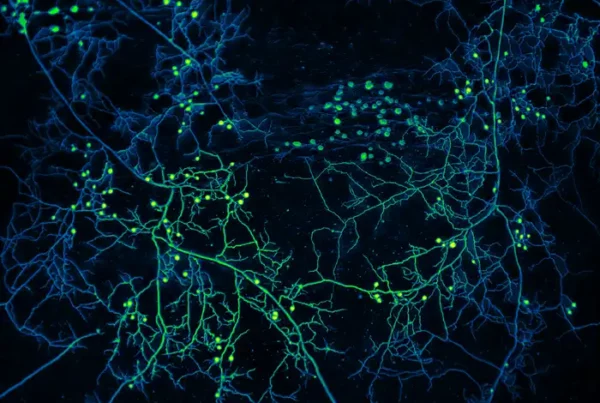Scientists have long understood that forest biodiversity is driven in part by something called rare-species advantage—that is, an individual tree has a better chance of survival if there are only a few other trees of the same species around. As a result, when the number of trees of any given species rises, survival rates among individual trees of that species drop. Scientists agree that rare-species advantage promotes forest diversity by preventing any one tree species from dominating the forest, but the mechanisms underlying rare-species advantage have been hard to identify.
A new study by researchers at the University of Maryland and the Chinese Academy of Sciences reveals a complex interplay between soil fungi and tree roots that could be the cause of rare-species advantage. The researchers found that the type of beneficial soil fungi living around tree roots in a subtropical forest in China determined how quickly the trees accumulated harmful, pathogenic fungi as they grew. The rate of accumulation of pathogenic fungi strongly influenced how well the trees survived when growing near trees of the same species. The study was published in the journal Science.
“For years, it was presumed that herbivores were the main drivers of rare-species advantage,” said UMD Biology Professor Nathan Swenson, a co-author of the paper. “But the significant role of fungal pathogens has become evident in recent years. This is the first time anyone has drilled down into that role to look at the rates trees accumulate pathogenic fungi together with the relationships trees have with beneficial fungi. The two are so strongly correlated, and the relationship between those two factors is such a strong predictor of how species density affects survival. We didn’t expect such a strong correlation.”
Among the different kinds of beneficial fungi that provide nutrients to tree roots, two proved significant in this study: ectomycorrhizal fungi that grow on the outside of tree roots and arbuscular mycorrhizal fungi that tunnel into roots. The researchers found that tree roots associated with arbuscular mycorrhizal fungi accumulated harmful, pathogenic fungi faster than those with ectomycorrhizal fungi.
Swenson suggested that ectomycorrhizal fungi surrounding roots on the outside may protect the roots from pathogenic fungi, while arbuscular fungi that bore into roots may offer a pathway for harmful fungi to enter the tree.
Throughout the study, tree survival rates varied with location and species, as did the amounts of fungi trees were associated with and the strength of rare-species advantage. That variation is typical of forests, and it’s what makes teasing out the mechanisms behind rare-species advantage difficult. By looking at both beneficial and pathogenic fungi in combination with how well trees survived near same-species neighbors, Swenson and his colleagues were able to identify clear patterns.
“In our study, the trees that fared better in higher density groups had higher levels of ectomycorrhizal fungi,” Swenson said. “In addition, we saw that trees that accumulate pathogenic fungi faster suffer more when their populations are denser.”
The researchers postulate that trees with faster rates of pathogen accumulation build up higher pathogen loads as they age, making them more infectious to any nearby seedlings and smaller trees of the same species. The spread of infection from larger trees with high pathogen loads to same species seedlings could be an underlying cause of rare-species advantage. Trees with ectomycorrhizal fungi may be more protected from infection, even when close to infected same-species neighbors, which could explain why they fare better in denser groups.
To conduct the study, the researchers collected soil around the roots of 322 trees from 34 species in a forest plot in Gutianshan National Nature Reserve in Zhejiang Province, China. Swenson and his colleagues sequenced the DNA of fungi from their samples and then correlated the type of fungi associated with each tree species with the amount of fungi accumulated by trees of different ages. They also looked at long-term seedling survival data from the same forest from 2006 to 2014, noting how well seedlings of each species survived as the number of trees of the same species increased.
The analysis revealed that variations in the level of rare-species advantage between species and locations could be explained by the type of beneficial fungi in the soil surrounding the tree roots. Tree species associated with ectomycorrhizal fungi had slower pathogenic fungi accumulation rates and a weaker rare-species advantage. Trees associated with arbuscular mycorrhizal fungi had higher pathogenic fungi accumulation rates and stronger rare-species advantage.
“We all understand that rare-species advantage is really important to forest diversity,” Swenson said. “With this study, we are really beginning to see the complex battle being waged in the microbial component of these ecosystems and the dueling roles among different fungi.”
Read the paper: Science
Article source: University of Maryland
Image credit: Yunquan Wang/Institute of Botany, Chinese Academy of Sciences








